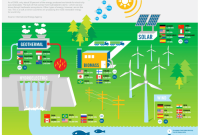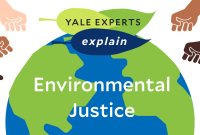Environmental law and sustainability are intricately woven together, forming the bedrock for safeguarding our planet for generations to come. As we grapple with environmental challenges, sustainability principles provide a roadmap for responsible resource management, pollution control, and ecosystem conservation.
The Cornerstone: Sustainability in Environmental Law
Sustainability in environmental law is a crucial concept that ensures the long-term well-being of both the environment and society. It necessitates considering the environmental, social, and economic implications of decisions to guarantee they don’t compromise the ability of future generations to meet their needs.
Why Sustainability Matters
Environmental law leverages sustainability to protect natural resources and ecosystems that sustain life. By promoting responsible resource use, reducing pollution, and conserving biodiversity, environmental laws can ensure these resources are available for future generations. Additionally, sustainability helps mitigate climate change, reduce poverty, and foster economic development.
Striking a Balance: Environmental Law Enforcement
Environmental law enforcement plays a vital role in achieving sustainability. It ensures that environmental laws and regulations are followed. Without proper enforcement, companies and individuals could easily disregard environmental regulations, leading to increased pollution and degradation. Ultimately, striking a balance between environmental protection and economic development is key, and environmental law enforcement is vital for achieving this.
Examples in Action
Numerous examples showcase how sustainability is incorporated into environmental laws and regulations. The Clean Air and Clean Water Acts in the United States set limits on air and water pollution emissions. The Endangered Species Act protects threatened and endangered species and their habitats. The National Environmental Policy Act requires federal agencies to consider the environmental impacts of their actions before making decisions.
Beyond the Environment: A Holistic Approach
Sustainability extends beyond environmental concerns. While environmental law is crucial, considering the rights of grandparents in family law is also essential. Grandparents play a significant role in families, and their contributions deserve recognition. As we strive to protect our environment, let’s not forget the importance of protecting our loved ones. Sustainability encompasses the well-being of our communities and the preservation of our family values.
Guiding Principles for Sustainability
Several key principles guide sustainability in environmental law, aiming to protect the environment and ensure its long-term viability. These principles provide a framework for decision-making and policy development, emphasizing the need to balance economic, social, and environmental considerations.
-
The Precautionary Principle: When faced with potential serious or irreversible environmental damage, the lack of absolute scientific certainty shouldn’t be a reason to postpone preventative or mitigating measures. Proactive action is encouraged even with incomplete knowledge of potential risks.
-
The Polluter Pays Principle: This principle holds that the polluter bears the financial responsibility for the environmental impacts of their activities. It aims to internalize the costs of pollution, incentivizing businesses and individuals to adopt cleaner technologies and reduce their environmental footprint.
-
The Principle of Intergenerational Equity: This principle recognizes the present generation’s responsibility to ensure future generations have access to a healthy and sustainable environment. It emphasizes considering the long-term consequences of environmental decisions and actions, safeguarding the needs of future generations.
Challenges and Opportunities: A Balancing Act
Implementing sustainability in environmental law presents both challenges and opportunities for strengthening environmental protection and promoting sustainable development.
Challenges:
- Fragmented Legal Frameworks: Environmental laws are often complex and fragmented, making consistent and coherent sustainability implementation difficult.
- Enforcement and Compliance Issues: Inadequate enforcement and compliance mechanisms can hinder the effectiveness of sustainability principles.
- Economic and Political Barriers: Conflicting economic and political interests with sustainability goals can make prioritizing sustainable practices challenging.
Opportunities:
- Strengthening Existing Laws: Revising and updating environmental laws to integrate sustainability principles can enhance their effectiveness.
- Collaboration and Stakeholder Engagement: Fostering collaboration among governments, businesses, and civil society organizations can facilitate sustainable decision-making.
- Economic Incentives: Implementing economic incentives, such as carbon pricing or tax breaks for sustainable practices, can encourage businesses and individuals to adopt sustainable behaviors.
Innovative Approaches to Sustainability
Environmental law leverages innovative approaches to promote sustainability:
-
Ecosystem Services Valuation: Assigning economic value to ecosystem services highlights their importance and informs decision-making.
-
Rights of Nature: Granting legal rights to ecosystems can protect them from degradation and ensure their long-term sustainability.
-
Adaptive Management: Using an iterative approach to environmental management allows for flexibility and adjustment based on new information and changing circumstances.
Case Studies: Learning from Experience
Sustainability principles have been successfully implemented in environmental law through various case studies, offering valuable insights into the challenges and opportunities associated with sustainability:
- The Clean Air Act Amendments of 1990: This act introduced innovative market-based mechanisms to reduce air pollution. The cap-and-trade system established limits on sulfur dioxide emissions and allowed companies to trade permits, creating incentives for pollution reduction. This approach proved effective in curbing acid rain demonstrating the potential of market-based solutions for environmental protection.
-
The Rio Earth Summit: The 1992 Rio Earth Summit marked a turning point in international environmental law. It resulted in the adoption of the Rio Declaration, enshrining the principles of sustainable development. The summit also led to the creation of the United Nations Framework Convention on Climate Change (UNFCCC), which has played a crucial role in addressing global climate change.
-
The Paris Agreement: The Paris Agreement, adopted in 2015, is a landmark international treaty aiming to limit global warming well below 2 degrees Celsius. It sets ambitious goals for reducing greenhouse gas emissions and promotes sustainable development. The agreement represents a significant step forward in global cooperation on climate change mitigation.
Lessons Learned: Overcoming Challenges
Implementing sustainability principles in environmental law presents challenges, including:
- Balancing economic growth with environmental protection
- Overcoming political resistance to change
- Ensuring compliance and enforcement
Case studies provide valuable lessons for addressing these challenges:
- Engaging Stakeholders and Building Consensus: Engaging stakeholders, including communities, businesses, and policymakers, fosters a sense of ownership and facilitates the development of solutions that address diverse concerns.
- Using Innovative and Flexible Approaches: Market-based instruments like cap-and-trade and ecosystem service valuation offer innovative solutions for sustainability challenges. Adaptive management allows for adjustments based on new information and changing circumstances.
- Monitoring and Evaluating Progress Regularly: Regularly monitoring progress and evaluating the effectiveness of implemented strategies ensures they are on track to achieve sustainability goals.
The Ever-Evolving Landscape: Impact and Future Directions
Case studies on sustainability in environmental law have significantly influenced the development of the field in several ways:
- Promoting Sustainable Development Principles: They showcase the successful integration of sustainable development principles into environmental law.
- Encouraging Market-Based Instruments: The effectiveness of market-based solutions like cap-and-trade for pollution reduction paves the way for their wider application.
- Fostering International Cooperation: The success of international treaties like the Paris Agreement highlights the importance of global collaboration on environmental issues.
These cases continue to shape the future of environmental law, providing guidance and inspiration for policymakers and practitioners working towards a more sustainable future.
Looking Forward: Embracing New Trends
Sustainability in environmental law is a rapidly evolving field with new trends constantly emerging. One of the most important trends is the increasing focus on integrated approaches to environmental protection. This means considering the interconnectedness of environmental issues and developing solutions that address multiple problems simultaneously. For example, a project aimed at reducing air pollution might also include measures to improve water quality and protect biodiversity.
Another vital trend is the growing recognition of equity and justice in environmental law. This ensures that the benefits and burdens of environmental protection are distributed fairly. For instance, environmental regulations might include provisions to safeguard low-income communities disproportionately affected by pollution.
Areas for Further Exploration
Despite the progress made, several areas require further research and development:
- Developing new legal tools and mechanisms: This includes exploring innovative approaches to promote sustainability and enforce environmental regulations.
- Improving our understanding of environmental impacts: Enhanced scientific understanding of human activities’ environmental consequences is crucial for effective policy development.
- Engaging the public in environmental decision-making: Effective strategies for public participation in environmental decision-making processes are essential for fostering a sense of ownership and building a more sustainable future.
By addressing these challenges and continuing to adapt, we can ensure that sustainability remains a core principle of environmental law.
Strategies for a Sustainable Future
Several strategies can be employed to promote sustainability in environmental law:
- Integrating Sustainability into All Levels of Government: Making sustainability a priority in all government decision-making, from local land use planning to national energy policy, is crucial.
- Enacting Strong Environmental Laws and Regulations: These laws and regulations should be based on sound science and designed to protect the environment and human health.
- Providing Incentives for Sustainable Behavior: Tax breaks for businesses investing in renewable energy or subsidies for consumers purchasing energy-efficient appliances can incentivize sustainable choices.
- Educating the Public about Sustainability: Educating the public through schools, media, and community outreach programs fosters a culture of environmental awareness and support for sustainable practices.
By taking these steps, we can collectively contribute to creating a more sustainable future for our planet.
Conclusion
Sustainability in environmental law is an evolving field that continues to shape the legal landscape. By embracing innovative approaches, fostering international cooperation, and prioritizing intergenerational equity, we can ensure a future where environmental protection and economic progress go hand-in-hand. As we strive to leave a healthy planet for future generations, environmental law plays a vital role in paving the way for a more sustainable tomorrow.




